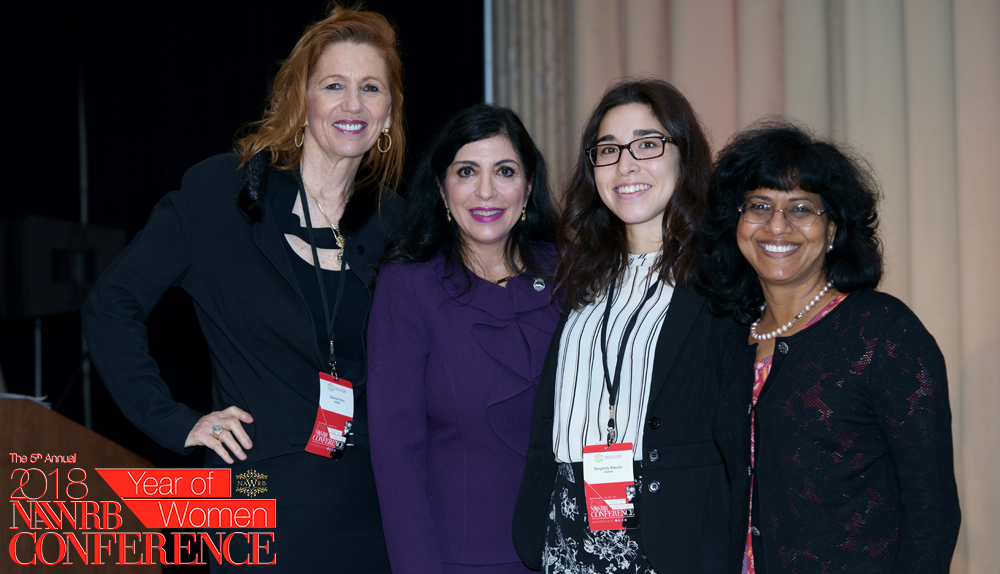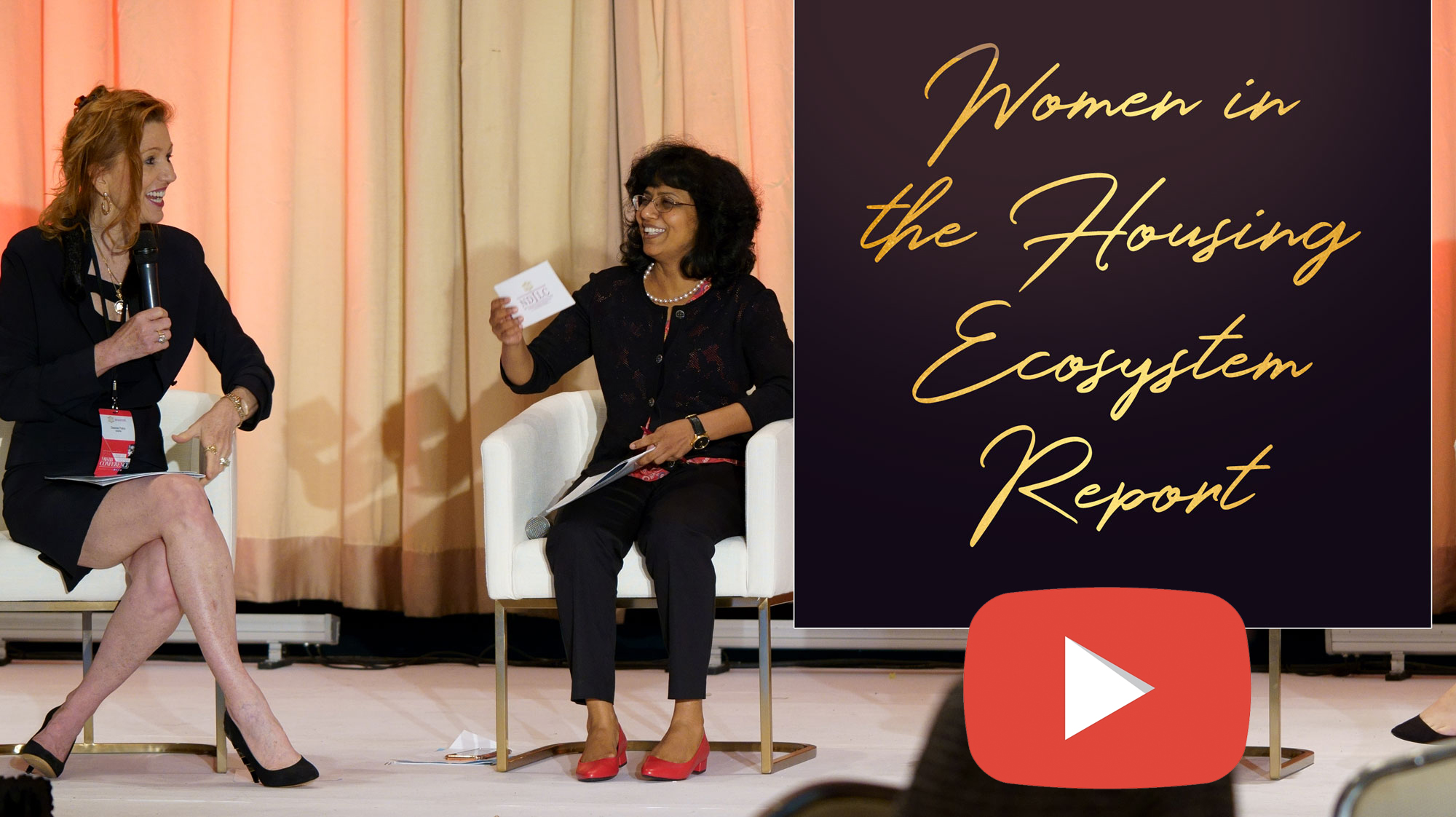After the excitement of our morning SHETalks by Tami Bonnell, CEO of EXIT Realty, and Rebecca Steele, President & CEO of National Foundation for Credit Counseling, our attendees heard from our Women in the Housing Ecosystem Report (WHER) Panel, featuring Dr. Chitra Dorai, Former IBM Fellow, Master Inventor, VP, CTO Cognitive Services, IBM Services, Member of IBM Industry Academy & Academy of Technology; Teresa Palacios Smith, Vice President of Diversity and Inclusion, HSF Affiliates LLC; Burgandy Basulto, Content Writer, NAWRB; and Moderator Desiree Patno, CEO & President, NAWRB.
The panelists discussed key findings from the WHER report, including recent statistics and trends on women’s homeownership, obstacles and solutions to women’s economic growth and independence; and issues of gender diversity at all levels of employment in STEM and other fields.
Dr. Chitra Dorai addressed the current state of housing, including the homeownership rate (at 64.3 percent according to the Q2 2018), and the ways that homeownership can contribute to women’s economic growth and independence. She notes that the WHER also describes how more women are becoming interested in investment opportunities in real estate, such as flipping homes and commercial real estate.
In addition to seeing more women create a profit by flipping homes, Teresa Palacios Smith shared other trends she has noticed in women’s homeownership and obstacles that women often face in buying a home. For instance, she notes that divorced women occupy a large share of single women homeowners, and that homebuyers are seeking a foundation where they feel safe and secure. She also points out that the homeownership rate is higher in the Midwest than in other areas of the nation because of home prices and cost of living are typically lower.
NAWRB Content Writer Burgandy Basulto shared key highlights of the report regarding women’s homeownership. The main highlights are that we are seeing an increase of single Americans as Millennials are delaying marriage; women are increasing their purchasing power because they are focusing their attention on achieving degrees and pursuing higher-paying jobs; and single women face a number of financial and professional obstacles, such as gender gap in industry representation, a persistent wage gap; a “pink tax” on hygiene products; limited opportunities for career advancement, and student loan debt.
The panel began speaking about ways we can increase gender diversity at all levels of employment, especially at the C-suite and leadership level. Effective gender strategies are those that take place at the individual and organizational level. This report highlights some of the key characteristics of effective practices at increasing female representation at all professional employment levels, as stipulated in Mercer’s When Women Thrive report.
At the individual level, an effective strategy at increasing diversity needs to be led by passionate leaders who drive change through open communication and exemplary behavior; adopted as a personal commitment by both employers and employees; and created to ensure perseverance over time by focusing on more than just hiring more women at the top.
At the organizational level, organizations should first conduct research outside and within their company to figure out which practices are creating change and which efforts need to be improved. This might involve creating better leave and flexibility programs for their employees, reconfiguring leadership roles that complement women’s unique competencies, and training their managers to effectively administer leave and return-to-work processes.
On the topic of quotas, Basulto notes that for women professionals to be perceived as more than just token hires, there needs to be a culture shift in companies that embraces diversity and inclusion. In addition, more women need to be hired at entry and management levels, and given opportunities to rise through the ranks, from management to the C-suite. Once current executive women leave their positions, we need to create a pathway for other women to take their place—a place they earn by merit, and through the visible hard work they did to get there.
Palacios Smith agreed that onus needs to be on the company and its leaders to drive gender diversity strategies in a way that suits their culture and business structure. Enforced quotas might have an effect opposite than desired since it might be seen as more of a burden than a benefit.
Dorai wrapped up the discussion by sharing what she believes are the biggest roadblocks to increasing female participation in male-dominated industries such as finance and technology. One of the factors contributing to the gender gap is that we are seeing less women majoring in STEM fields, which would help women achieve higher-paying careers and grow their purchasing power. Women need to be encouraged to pursue these careers from elementary school and onward. Since NAWRB is based in Irvine, CA, which is home to the University of California, Irvine, one of the leading schools in STEM, Patno suggested we can start local in getting more women into STEM programs.
For next year’s 2019 Women in the Housing Ecosystem Report (WHER), the panel suggested incorporating an action plan that addresses the problems highlighted in the 2018 report, as well as more charts and graphs to communicate the data in a visually-pleasing format.

 Login
Login


